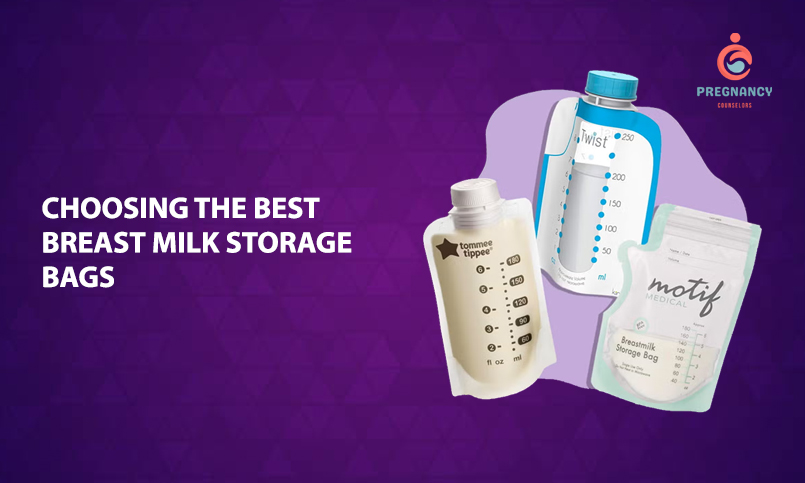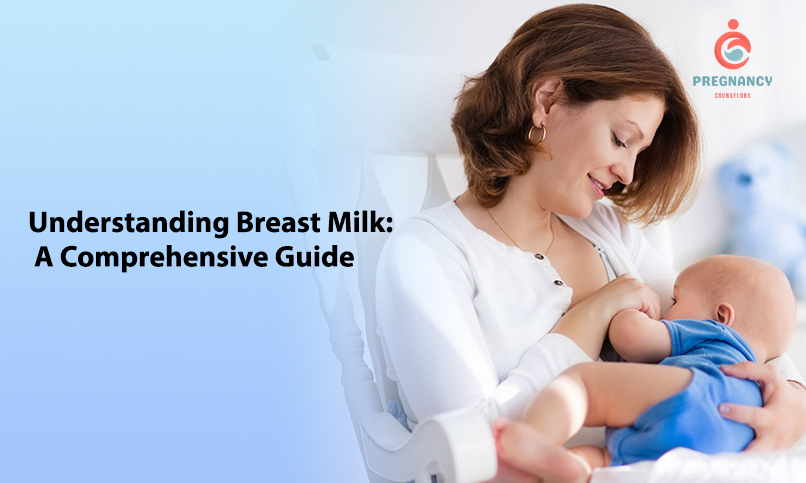The human milk is processed differently from any other single food supply and is exclusively tailored to meet the young growing baby’s needs as it supplies food and immunity as well as support in his/her development. Breast milk is in contrast to formula, which is more or less a fixed ingredient, and is dynamic: colostrum in the first few days up to mature milk later to be able to feed the baby what is best at every age.
Because it is a naturally occurring compound of biologically active agents, its bioavailability is not a concern and will not cause problems with its assimilation by the infant’s digestive system or allergies. In addition to the nutritional and health values breastfeeding creates a strong psychological attachment between the mother and the infant during the most vulnerable ages in the lives of both the mother and child.
Table of Contents
The Importance of Breast Milk
Breast Milk is ideal as a natural food for the child during the first years of his/her life. It promotes physical development in the baby increases his/her immunity and creates the bond between the mother and the baby. This substance is most suitable for a newborn because it contains all the necessary nutrients such as proteins, carbohydrates, fats, vitamins, and minerals within the required portions that are essential for the first six months of the baby’s life. Besides, breast milk contains antibodies to immune the baby against infections and diseases including ear infections, respiratory diseases, and diarrhea.
The advantages are numerous despite the breastfeeding period being limited. Some research shows that breastfed children have a reduced risk of all chronic diseases including obesity, diabetes type two, and some cancers in the future. Breast Milk is also rich in DHA and ARA important in brain development and cognitive growth.
The same benefits accrue to the baby such as helping in proper elimination, reducing chances of gastrointestinal diseases, and HIV transmission, as well as improving dental health, and boosting the baby’s immune system among other advantages to the mother such as facilitating uterine contractions hence aiding postnatal recovery, preventing and reducing chances of breast and ovarian cancers, and assisting in weight loss. It also helps to fix the bond between the mother and the child and is easy on the pocket too.
Breastmilk Storage: A Practical Guide
Among all the many questions breastfeeding mothers have one of the most frequently asked questions – is how to store breast milk properly. It helps that breastmilk retains its nutritional value and it is free from spoilage, as it should be. Packing solutions depend on disposable bags, they are comfortable to use and can be disposed of after one use, on the other hand, there are reusable bags that should be washed and sterilized for each use.
Breast milk can be kept at room temperature (25 degrees Celsius) if prepared within the past 4 hours. In the refrigerator (4° C or less), it will be safe to consume for up to 4 days if placed at the back since it is colder. Self-demanding breastfeeding is about 10 dm3 per day, and breastmilk can be stored in the freezer at not more than -18 °C for not more than 6 months at a stretch but for a maximum of 3 months for quality retention.
While shallow freezers (-5°C) may take up to 3 months and deep freezers (-20°C) may take up to 12 months. This means putting labels on the storage containers that indicate when the expression occurred, portioning milk especially if it’s in a large amount to ensure no part is wasted, and refraining from freezing milk again once it has been thawed since this lowers its quality.
How Much Breastmilk Should a Newborn Consume?
The amount of breastmilk needed for a baby varies with age, the weight of the baby, and appetite. In the first month, the feeding amount ranges between 1 to 3 ounces per feed 8-12 feeds a day. First of all, when the baby’s stomach is very small and he eats very little, feeding should be carried out as often as possible. Babies at 1-2 months take 3-4 ounces per feeding and take feedings 7-9 times per day.

By 3-6 months the infant requires 4-6 ounces of formula per feeding, taken about 5-6ths in a day due to growth and the development of routine feeding schedules. Parents should look at symptoms of hunger including root-like movements, tongue movements as if feeding or comfort-seeking, and irritability while assessing for symptoms of satiation that include relaxation, turning the head away from the bottle, or eyes closing to signal to sleep.
Can Breast Milk Decrease Obesity?
A very important study done on this topic indicates that exclusive breastfeeding can help reduce the prevalence of childhood obesity. Breastfed babies are more capable of controlling the quantity of foods they consume; and the rate at which they can take foods to their fill or being full.
This is important because it also fosters the early development of correct eating practices. It was established that breast milk also contains hormones such as leptin and adiponectin which are thought to control fat deposition and thus safeguard against future obesity. Furthermore, it can nourish the baby most efficiently without the need to oversupply the baby with breast milk.
Types of Breastmilk
Breastmilk has the properties of constantly changing its composition to satisfy the needs of the baby at a given age. The yellowish fluid secreted in the initial days of birth, known as colostrum, is bitter in taste and food value and possesses high antibody value, which in turn serves as a modification in the form of a vaccine for the neo-born.
They are again different from colostrum and are secreted between the second and fifth day of life and contain more fat and calories thus being suitable for the fast-growing infant. The mature milk given after the first one or two weeks is nutritive. This will contain foremilk, which is fairly diluted with water and contains a lot of lactose, and the hindmilk, which, being the second part of the milk, is fattier.
Tips for Safe Storage of Breastmilk
Breastmilk, if stored for use at a later time, has to be kept safe nutritious free from contamination, ensuring the use of clean and sterilized containers are used for breastmilk storing. Storage bags should not be packed full to accommodate expansion during freezing conditions. To defrost frozen milk, one should put the milk in the refrigerator, preferably overnight, or use gently running warm water; do not defrost in the microwave because all nutrients of the milk are reduced. Swirl the thawed milk gently for uniform distribution of the fat layer maybe before feeding but do not shake it vigorously.
Mixing Formula with Breastmilk: Is It Safe?
Formulas can safely be mixed with breastmilk though this comes with putting certain precautions to enhance the value of breastmilk. Never try to make formula using hot water or cold water but as per the instructions given on the packet. Direct dilution of the powdery form of the food with breastmilk is inadvisable because breastmilk will change the nature of the formula.
Formula closest to breastmilk can be considered, but it should still be prepared according to the manufacturer’s guidelines. Ensure the baby consumes fresh breast milk first then formula should be given to ensure the baby takes as many nutrients from the breast milk. Do not pre-make the adult food by adding breastmilk to the formula immediately before feeding time and do not store the mixture.
Increasing Breastmilk Supply
Lack of breast milk can be worrisome to some moms but the following few steps can be of help when practicing LLL. Demand feeding is one of the most efficient techniques for promoting milk production since the baby feeds as often as he or she wants to. Lactogenic foods such as oats, fenugreek, almonds, and green vegetables should also be taken for increased production of breast milk besides taking moderate amounts of water and other balanced diets.
More important to try to reduce stress by practicing relaxation techniques and/or consulting with a certified lactation specialist who can help with positioning and other means to make feedings more successful and promote a good milk supply.
Choosing the Best Breast Milk Storage Bags

The kind of storage bags needed is very important in determining how long the breast milk will last. Use breastmilk bags that are BPA, and food-grade plastic for safety purposes when purchasing the bags. It is recommended that you go for large bags with a carrying capacity of 6 to 8 ounces depending on this requirement with tight double zippers to avoid leakage. Measuring lines, pourers, and space to insert them into nameplates are convenient for daily use.
Practical Tips for Breastfeeding Mothers
Breastfeeding can be quite complex for most ladies with the onset of motherhood specifically the first timers. Lactation can be synchronized by developing a schedule for feeding and pumping the breasts consistently several times a day. Owning a good breast pump may help make the process of milk extraction easier. Physical health, which includes eating proper food, drinking water, and sleeping is also a priority for a healthy person. Encouragement and useful tips that can come from lactation consultants or breastfeeding support groups are never a bad idea on the way.
Conclusion
Breastfeeding is a joyous process that has no equal to the advantages of both the child and the mother. Knowledge of what breast milk is, how it should be stored, how much breastmilk should a newborn eat chart, how much should be given at a time, and how supply can be increased makes this journey easier and more enjoyable. Every ounce still is an accomplishment, so let’s appreciate every precious breastmilk produced regardless of the quantity.

